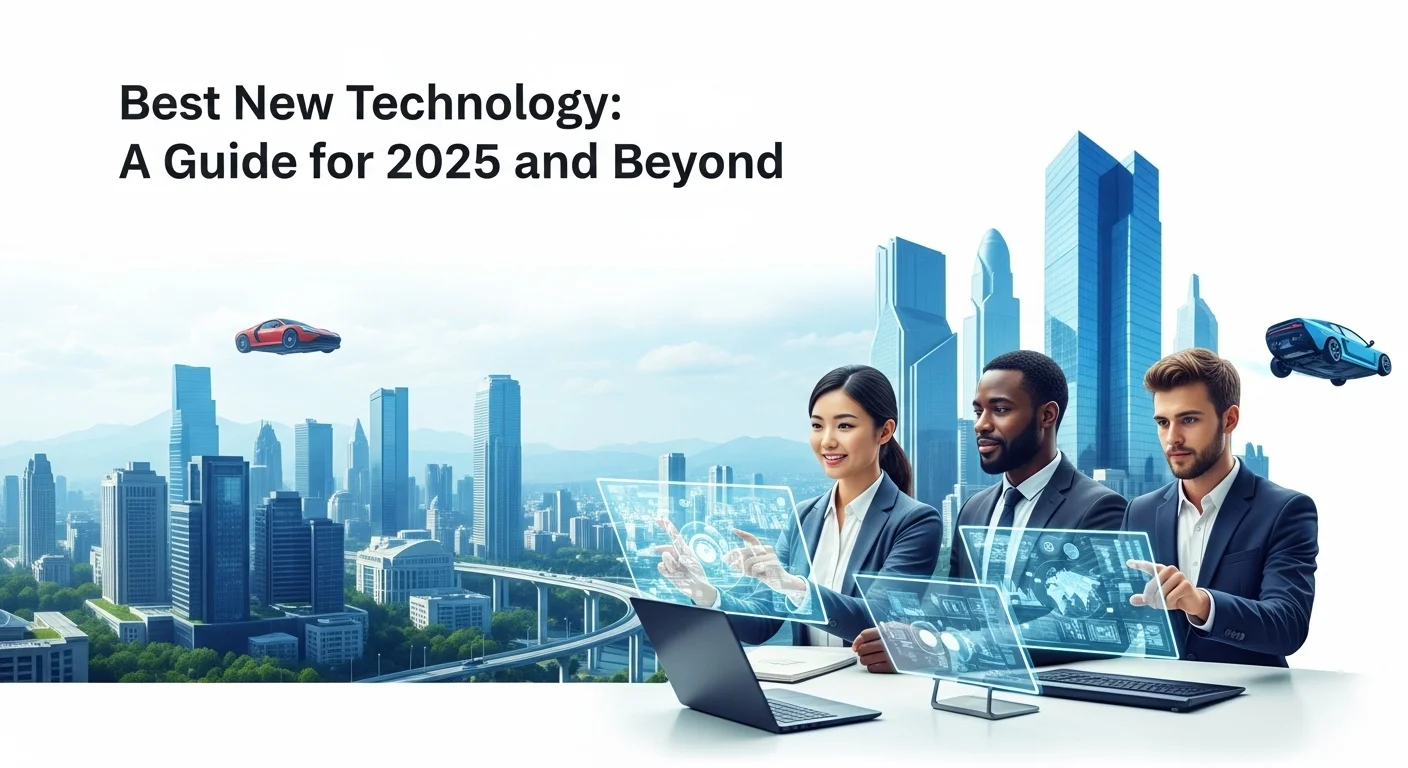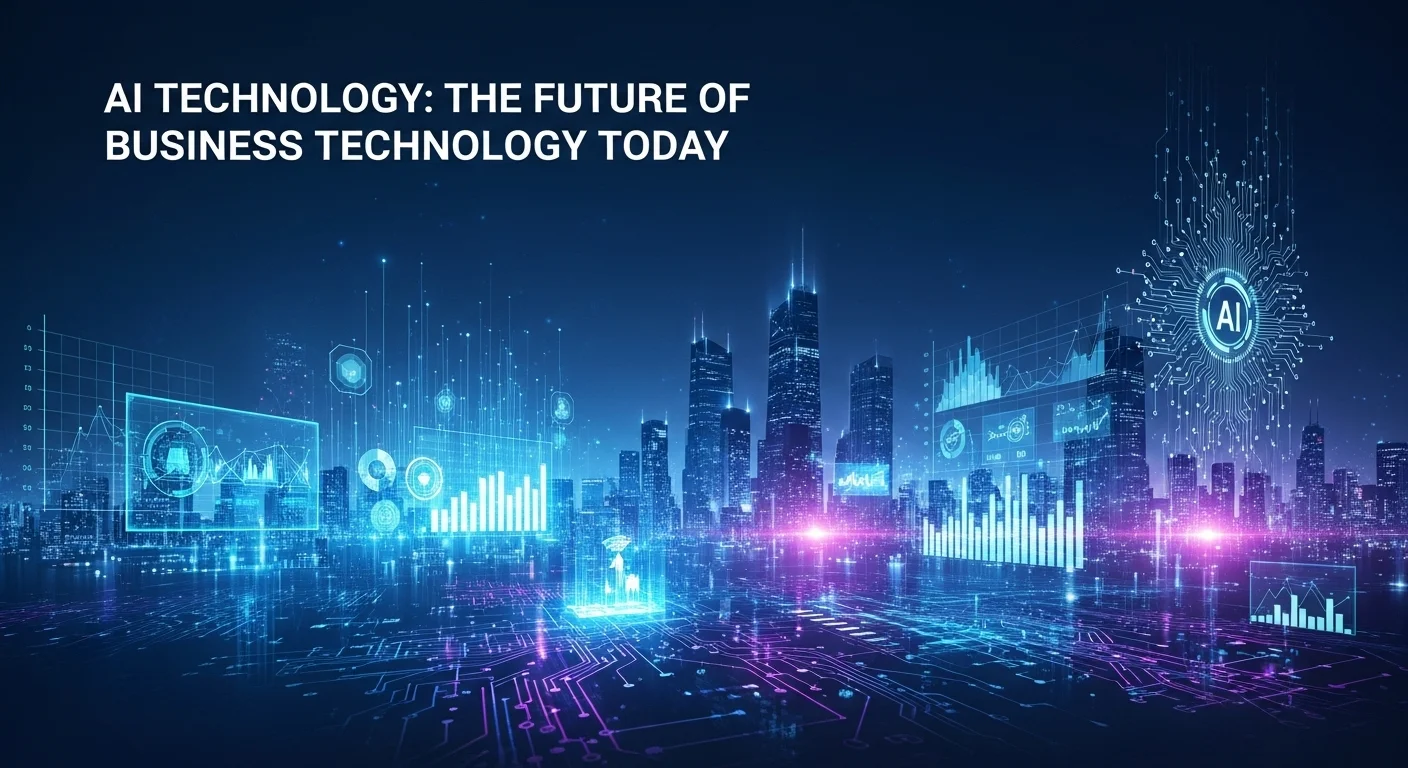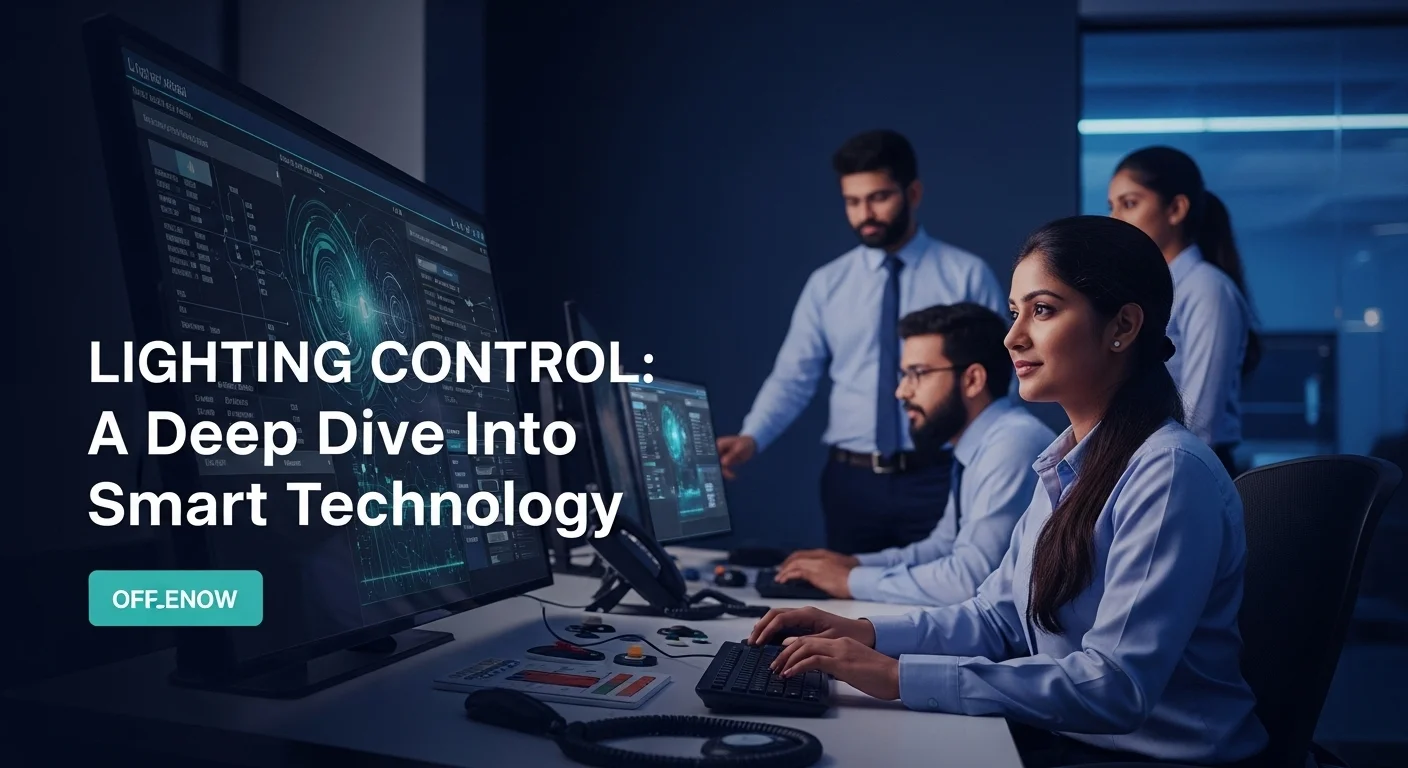Security Technology: A Guide to Modern Tech Security
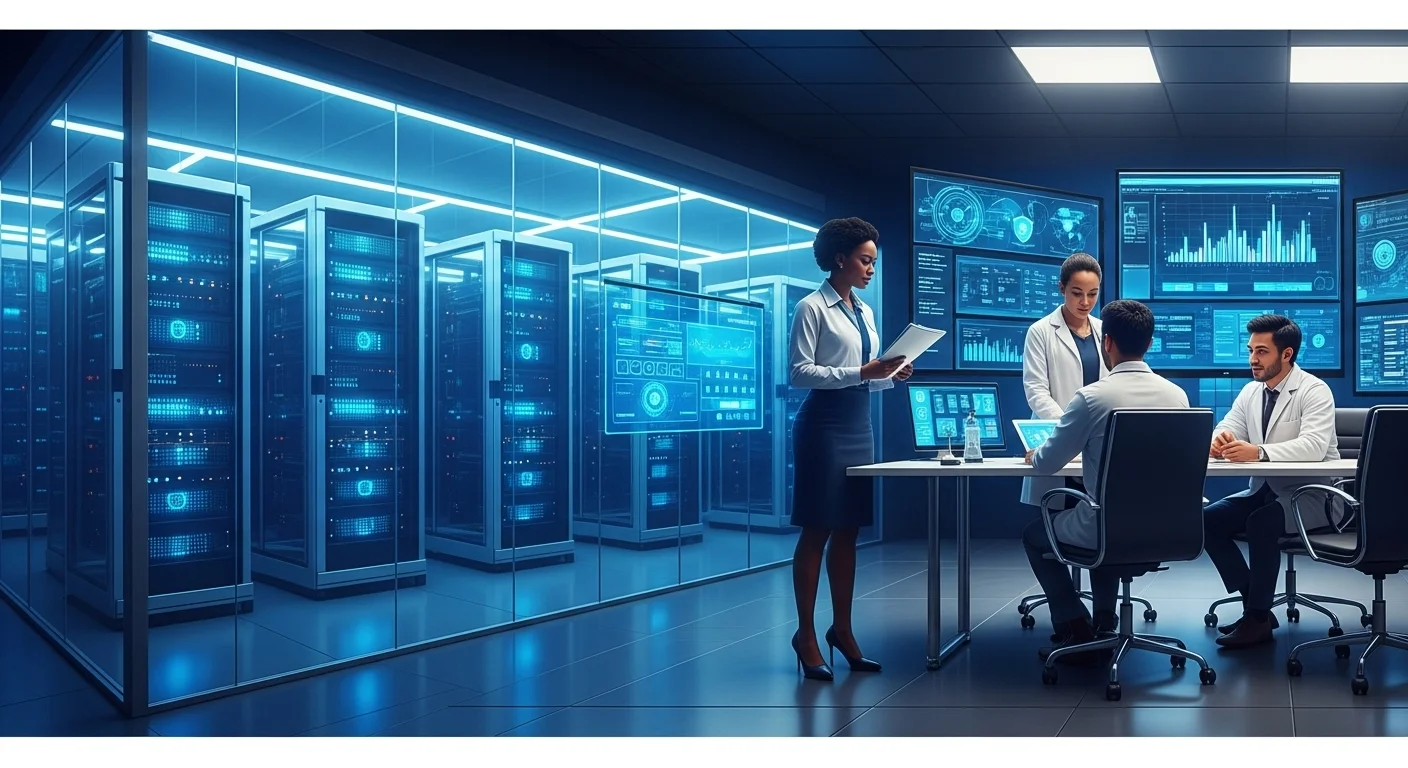
Executive Summary
In today's digitally-driven world, Security Technology is no longer a niche concern but a fundamental pillar of any successful technology strategy. For businesses and tech enthusiasts alike, understanding the landscape of digital threats and the technologies designed to combat them is paramount. This article delves into the core of Security Technology, exploring its critical importance from the enterprise to the individual level. We will examine the essential components, from foundational network security to the advanced challenges of the cloud. Key topics include the various types of network security technologies, the necessity of a thorough information technology security assessment, the role of specialized security technology companies, and the evolving fields of cloud technology security and secure cloud technologies. By understanding these elements, organizations can build resilient digital infrastructures, protect sensitive data, maintain customer trust, and drive innovation securely. This guide serves as a comprehensive resource for navigating the complexities of modern cybersecurity and harnessing technology to build a safer digital future.
Table of Contents
What is Security Technology and why is it important in Technology?
In an era where data is the new oil and digital infrastructure forms the backbone of the global economy, the term 'Security Technology' has ascended from technical jargon to a critical business imperative. At its core, Security Technology encompasses the vast and ever-evolving array of tools, strategies, policies, and methodologies used to protect digital assets and electronic information from unauthorized access, use, disclosure, alteration, or destruction. It is the shield that guards our digital lives, from personal privacy to corporate intellectual property and national security. The importance of this field cannot be overstated; it is the essential enabler of trust in the digital world, allowing technology to flourish and businesses to operate with confidence. Without robust security, the very technology that empowers us becomes a significant vulnerability.
The Core Principles: Confidentiality, Integrity, and Availability (CIA Triad)
To truly grasp the significance of Security Technology, one must first understand its foundational principles, commonly known as the CIA Triad. This model is a cornerstone of information security and provides a framework for evaluating and implementing security controls.
- Confidentiality: This principle is about ensuring that information is not disclosed to unauthorized individuals, entities, or processes. It's about privacy and secrecy. In practice, this is achieved through measures like encryption, access controls, and data classification. For a business, confidentiality protects trade secrets, customer data, and financial records from competitors and malicious actors.
- Integrity: Integrity involves maintaining the consistency, accuracy, and trustworthiness of data over its entire lifecycle. Data must not be changed in transit, and steps must be taken to ensure that data cannot be altered by unauthorized people. Technologies like hashing, digital signatures, and version control systems are employed to maintain data integrity.
- Availability: The principle of availability ensures that information and the systems that house it are accessible and usable upon demand by an authorized entity. It means preventing disruptions in service and ensuring reliable access to resources. This is protected through hardware maintenance, disaster recovery solutions, and robust network architectures designed to withstand failures or attacks like Distributed Denial-of-Service (DDoS).
The Evolution of Digital Threats
The drive to develop more sophisticated Security Technology is a direct response to the relentless evolution of digital threats. Early cybersecurity concerns were focused on simple viruses and unauthorized access. Today, the threat landscape is a complex ecosystem of sophisticated adversaries and advanced attack vectors. These include state-sponsored hacking groups, organized cybercrime syndicates, hacktivists, and insider threats. Their methods have grown from simple malware to advanced persistent threats (APTs), ransomware-as-a-service (RaaS), zero-day exploits, and complex social engineering campaigns. The proliferation of IoT devices and the move to remote work have exponentially expanded the attack surface, creating new entry points for attackers to exploit. This constant cat-and-mouse game between attackers and defenders is what fuels innovation across the entire security industry.
Why Security Technology is Non-Negotiable for Modern Businesses
For any modern business, investing in Security Technology is not an optional expense but a fundamental cost of doing business. The ramifications of a security breach are multifaceted and can be devastating.
- Financial Loss: The direct costs of a breach include regulatory fines (such as those under GDPR or CCPA), legal fees, incident response costs, and potential ransom payments. Indirect costs, which are often greater, include business downtime, loss of revenue, and the cost of notifying affected customers.
- Reputational Damage: Trust is a currency that is hard-earned and easily lost. A public breach can shatter customer confidence, leading to customer churn and damaging brand reputation for years.
- Legal and Regulatory Compliance: Industries like healthcare (HIPAA), finance (PCI DSS), and any organization handling personal data (GDPR, CCPA) are subject to strict regulatory requirements. Failure to comply can result in severe penalties and legal action. A comprehensive information technology security assessment is often the first step toward achieving and maintaining compliance.
- Protection of Intellectual Property: For many companies, their most valuable asset is their intellectual property—patents, trade secrets, and proprietary processes. A breach can lead to the theft of this IP, handing a significant advantage to competitors.
The Critical Role of Network Security Technologies
The network is the central nervous system of any organization's IT infrastructure, making its protection a top priority. Network security technologies are a collection of hardware and software solutions designed to protect the usability and integrity of a network and its data. Key components include:
- Firewalls: These act as a barrier between a trusted internal network and untrusted external networks, such as the Internet. Next-Generation Firewalls (NGFWs) offer more advanced capabilities, including deep packet inspection, intrusion prevention, and application awareness.
- Intrusion Detection and Prevention Systems (IDS/IPS): An IDS monitors network traffic for suspicious activity and issues alerts, while an IPS can actively block or prevent detected intrusions.
- Virtual Private Networks (VPNs): VPNs create a secure, encrypted connection over a public network, ensuring that data transmitted between a remote user and the corporate network remains confidential.
- Zero Trust Network Access (ZTNA): A modern approach that abandons the idea of a trusted internal network. ZTNA operates on the principle of 'never trust, always verify,' requiring strict identity verification for every person and device trying to access resources on a private network, regardless of whether they are sitting inside or outside the network perimeter.
Establishing a Baseline: The Information Technology Security Assessment
You cannot protect what you do not understand. An information technology security assessment is a formal, systematic process of evaluating the security of an information system or network. It is a critical exercise for identifying vulnerabilities, quantifying risks, and prioritizing remediation efforts. A typical assessment involves several stages:
- Vulnerability Scanning: Automated tools are used to scan systems, applications, and networks for known security weaknesses.
- Penetration Testing: Also known as ethical hacking, this involves simulating a real-world attack to discover and exploit vulnerabilities, providing a realistic measure of an organization's defensive capabilities.
- Risk Assessment: This process identifies critical assets, evaluates potential threats and vulnerabilities, and analyzes the potential impact of a security event. The output is a prioritized list of risks that informs the overall security strategy.
- Compliance Audits: These assessments specifically measure an organization's adherence to regulatory standards and internal policies.
Conducting a regular information technology security assessment is a hallmark of a mature security program, enabling continuous improvement and adaptation to new threats.
The Ecosystem of Protection: Security Technology Companies
The complexity of the modern threat landscape has given rise to a vibrant and diverse industry of security technology companies. These organizations provide the products, services, and expertise that businesses need to defend themselves. The market can be broadly categorized:
- Product Vendors: These companies develop and sell specific security solutions, such as endpoint protection (antivirus), firewalls, email security gateways, and security information and event management (SIEM) systems.
- Managed Security Service Providers (MSSPs): For organizations that lack in-house expertise, MSSPs offer outsourced security management, including 24/7 monitoring, threat detection, and incident response.
- Consulting and Advisory Firms: These firms provide strategic guidance, help with policy development, conduct security assessments, and offer specialized services like digital forensics and incident response. The expertise offered by leading security technology companies is often indispensable for navigating complex security challenges.
Securing the New Frontier: Cloud Technology Security and Secure Cloud Technologies
The mass migration to the cloud has revolutionized IT, but it has also introduced new security paradigms and challenges. Cloud technology security refers to the broad set of policies, technologies, applications, and controls utilized to protect data, applications, and the associated infrastructure of cloud computing. A key concept is the 'shared responsibility model,' where the cloud provider (like AWS, Azure, or Google Cloud) is responsible for the security *of* the cloud, while the customer is responsible for security *in* the cloud. This means customers must properly configure their cloud environments, manage access, and secure their data and applications. To address these challenges, a new category of secure cloud technologies has emerged:
- Cloud Access Security Brokers (CASBs): These are on-premises or cloud-based security policy enforcement points, placed between cloud service consumers and cloud service providers to combine and interject enterprise security policies as the cloud-based resources are accessed.
- Cloud Security Posture Management (CSPM): CSPM tools are designed to identify and remediate misconfiguration issues and compliance risks in cloud environments.
- Cloud Workload Protection Platforms (CWPPs): These platforms are designed to protect workloads (such as virtual machines, containers, and serverless functions) across multi-cloud environments.
Mastering cloud technology security is essential for any organization leveraging the power and scalability of the cloud. The adoption of secure cloud technologies is no longer a choice but a necessity for maintaining a strong security posture in a cloud-native world.
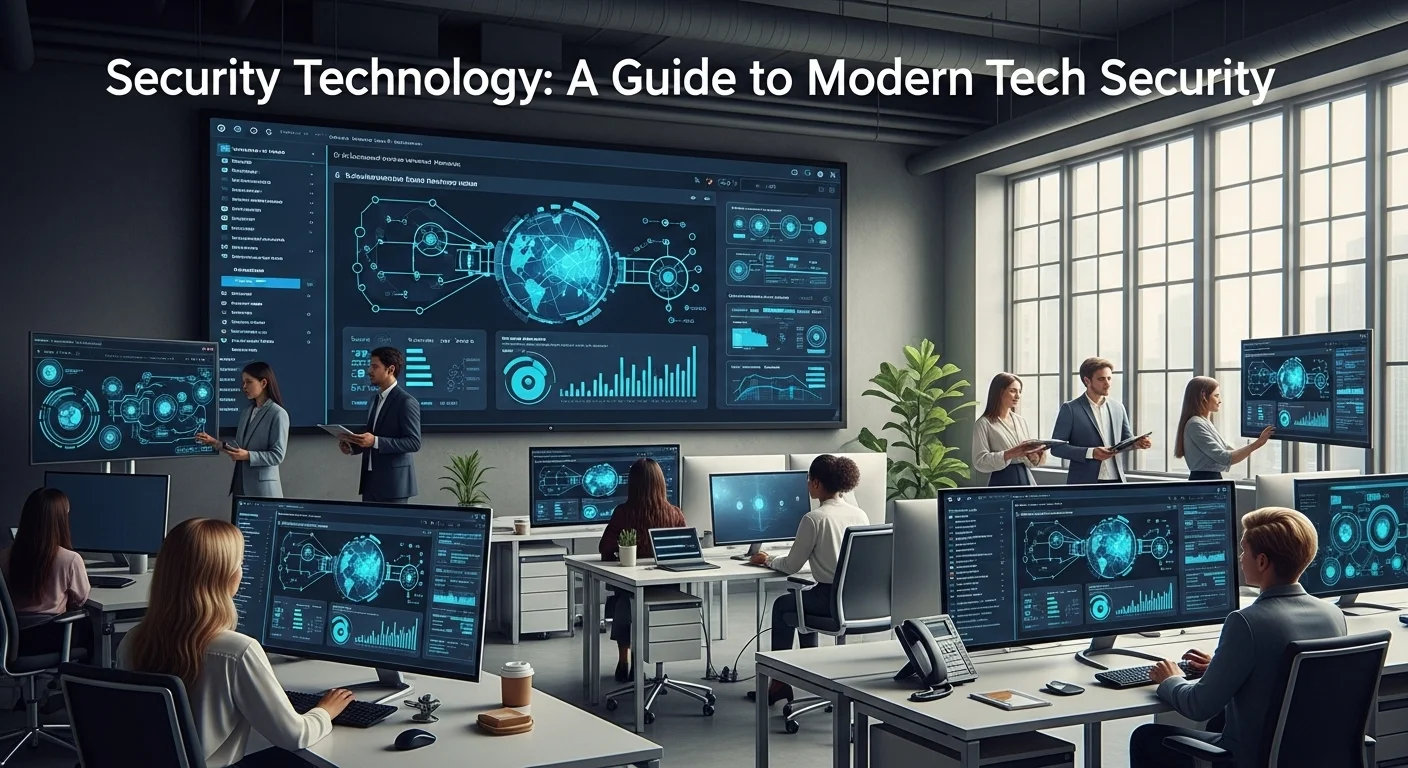
Complete guide to Security Technology in Technology and Business Solutions
Navigating the intricate world of Security Technology requires more than just a surface-level understanding. For businesses to build resilient and adaptive defenses, they must delve into the technical methods, strategic frameworks, and diverse resources available. This guide provides a deeper exploration of the critical components of a modern security strategy, offering insights into advanced technologies and business applications. It is designed for technology leaders, IT professionals, and business owners who need to make informed decisions about protecting their digital assets. A robust security posture is not built on a single product but on a layered, defense-in-depth strategy that integrates people, processes, and technology.
Advanced Network Security Technologies in Practice
While traditional firewalls and VPNs remain relevant, the modern enterprise network, which is often a hybrid of on-premises, cloud, and remote endpoints, demands more sophisticated controls. The evolution of network security technologies is focused on visibility, granular control, and adapting to dynamic environments.
- Zero Trust Architecture (ZTA): Moving beyond the legacy 'castle-and-moat' model, Zero Trust is a strategic approach to cybersecurity that secures an organization by eliminating implicit trust and continuously validating every stage of a digital interaction. It is not a single product but a framework built on principles like micro-segmentation, multi-factor authentication (MFA), and least-privilege access. The goal is to minimize the attack surface and prevent lateral movement by an attacker who has breached the perimeter.
- Secure Access Service Edge (SASE): Pronounced 'sassy,' SASE is an architectural model that converges network and security services into a single, cloud-delivered platform. It combines capabilities like SD-WAN (Software-Defined Wide Area Networking) with a suite of security functions, including Firewall as a Service (FWaaS), CASB, ZTNA, and Secure Web Gateways (SWG). SASE is designed for the modern, distributed workforce, providing secure and optimized access to applications and data, regardless of user location or the device being used.
- Micro-segmentation: This is a security technique that involves dividing a data center or cloud environment into distinct, small security zones, down to the individual workload level. By doing so, it allows security teams to define and enforce granular security policies for each segment. If a breach occurs in one segment, micro-segmentation prevents the attacker from moving laterally to other parts of the network, thus containing the threat.
Mastering the Information Technology Security Assessment Process
A one-off security check is insufficient in the face of ever-changing threats. A mature security program relies on a continuous cycle of assessment and improvement. An effective information technology security assessment program goes beyond basic scanning and incorporates established frameworks and methodologies.
- NIST Cybersecurity Framework (CSF): Developed by the U.S. National Institute of Standards and Technology, the NIST CSF provides a high-level, strategic view of an organization's management of cybersecurity risk. It is organized into five core functions: Identify, Protect, Detect, Respond, and Recover. This framework helps organizations understand their current security posture, set goals for improvement, and communicate about risk to stakeholders.
- ISO/IEC 27001: This is an international standard for managing information security. It provides a systematic approach to managing sensitive company information so that it remains secure. Achieving ISO 27001 certification demonstrates to customers and partners that an organization has implemented a robust Information Security Management System (ISMS).
- The Assessment Lifecycle: A comprehensive assessment is not a single event. It begins with planning and scoping, defining what will be tested. The next phase is information gathering and analysis, where tools and manual techniques are used to identify vulnerabilities. This is followed by the exploitation phase (in penetration testing) to confirm the risk. The final, and most crucial, phase is reporting and remediation. The report should clearly articulate the findings, business impact, and actionable recommendations for fixing the identified issues. This continuous loop of testing and fixing is what drives security maturity.
Navigating the Landscape of Security Technology Companies
The market for security technology companies is crowded and complex. Choosing the right partners and vendors is a critical strategic decision. Businesses should understand the different types of players in this ecosystem to make informed choices.
- Endpoint Security Vendors: These companies focus on protecting end-user devices like laptops, desktops, and mobile phones. Modern Endpoint Detection and Response (EDR) and Extended Detection and Response (XDR) platforms go beyond traditional antivirus, providing advanced threat detection, investigation, and response capabilities by correlating data from multiple security layers.
- Cloud Security Specialists: As businesses move to the cloud, a new breed of security technology companies has emerged, focusing exclusively on cloud-native security challenges. They offer the specialized tools—CSPM, CWPP, CASB—needed to secure complex multi-cloud environments.
- Managed Security Service Providers (MSSPs) vs. Managed Detection and Response (MDR): An MSSP typically provides broad security management, such as managing firewalls and handling alerts. MDR is a more specialized service focused on advanced threat hunting, monitoring, and incident response. For businesses without a dedicated 24/7 Security Operations Center (SOC), MDR can be a highly effective way to augment their capabilities.
- Consultants and vCISOs (Virtual Chief Information Security Officers): For strategic guidance, policy development, or specialized projects, security consultants can provide invaluable expertise. A vCISO offers a flexible and cost-effective way for small and medium-sized businesses to access high-level security leadership without the cost of a full-time executive.
A Deep Dive into Cloud Technology Security
Effective cloud technology security requires a nuanced understanding of the different service models and their unique security implications. The shared responsibility model varies significantly across IaaS, PaaS, and SaaS.
- Infrastructure as a Service (IaaS): In this model (e.g., AWS EC2, Azure VMs), the customer has the most control and therefore the most security responsibility. They are responsible for securing everything from the operating system up, including the data, applications, and network configurations within their virtual environment. Misconfigurations are the leading cause of IaaS security incidents.
- Platform as a Service (PaaS): In a PaaS model (e.g., AWS Lambda, Google App Engine), the cloud provider manages the underlying infrastructure and operating system. The customer is responsible for securing the applications they build and deploy on the platform, as well as managing user access.
- Software as a Service (SaaS): With SaaS (e.g., Salesforce, Microsoft 365), the provider manages almost everything. The customer's primary responsibility is managing user access and securing their data within the application. This often involves configuring the application's built-in security settings and monitoring for unauthorized access.
Implementing Secure Cloud Technologies
To manage the complexities of cloud security, organizations must leverage a new generation of secure cloud technologies that provide visibility and control across disparate cloud services.
- Cloud Access Security Broker (CASB): A CASB acts as a security gateway between users and cloud applications. It enforces security policies such as authentication, authorization, encryption, and threat prevention. A CASB can provide visibility into 'shadow IT' (unapproved cloud services used by employees) and ensure that data stored in sanctioned cloud apps complies with corporate policies.
- Cloud Security Posture Management (CSPM): CSPM tools continuously monitor cloud environments for misconfigurations and compliance violations. They automate the process of finding and fixing issues like public S3 buckets, overly permissive IAM roles, and unencrypted databases. CSPM is essential for maintaining a secure and compliant posture in complex IaaS and PaaS environments.
- Cloud Workload Protection Platform (CWPP) & Container Security: As development shifts to containers and serverless functions, traditional security tools are often ineffective. CWPPs are designed to secure these modern workloads throughout their lifecycle, from the development pipeline (scanning container images for vulnerabilities) to runtime protection (monitoring for and blocking threats in running containers).
By integrating these advanced network security technologies, mastering the information technology security assessment process, strategically partnering with security technology companies, and deeply understanding both the challenges of cloud technology security and the solutions offered by secure cloud technologies, businesses can build a formidable defense against the threats of the digital age.
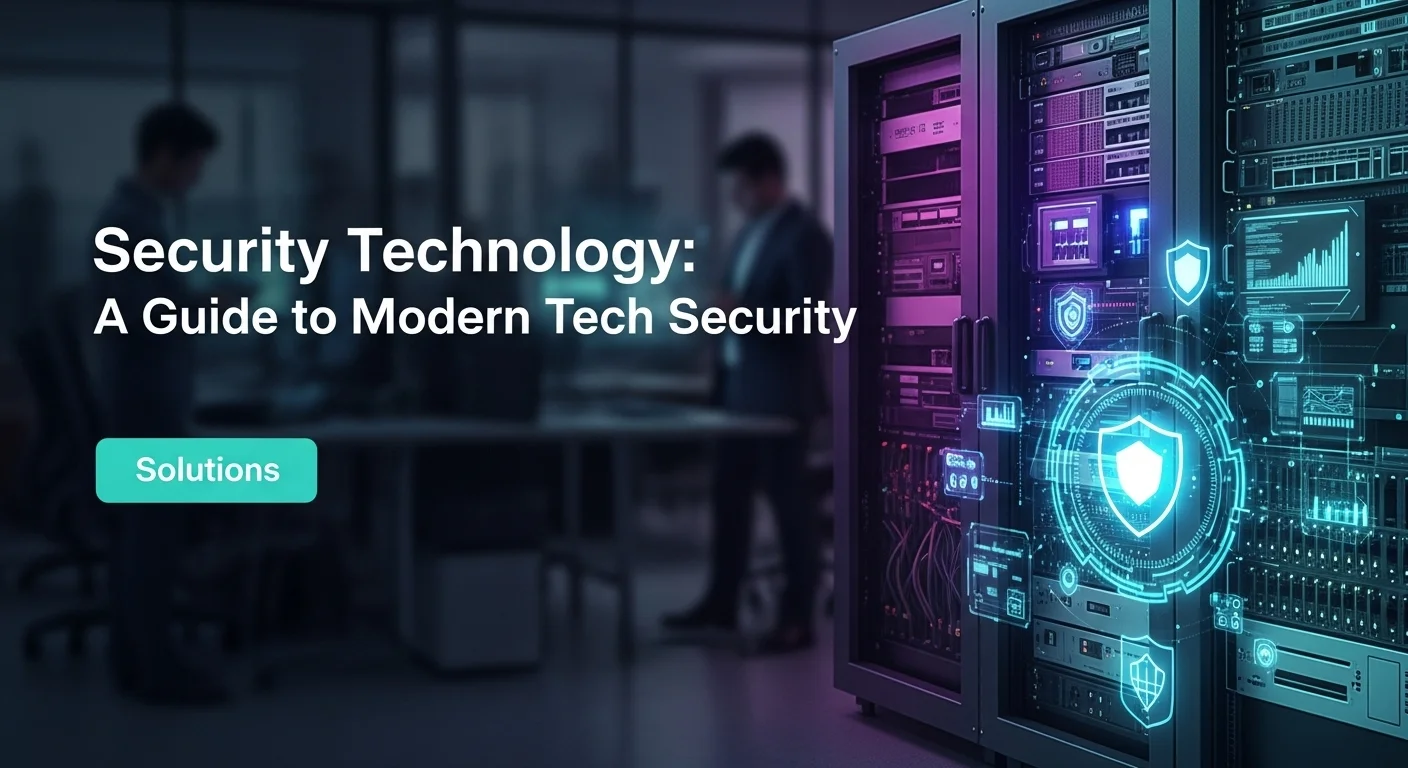
Tips and strategies for Security Technology to improve your Technology experience
Building a robust security posture is not just about acquiring the latest technology; it's about embedding security into the culture and processes of an organization. It involves a continuous cycle of learning, adapting, and improving. This section provides practical tips and actionable strategies for leveraging Security Technology to enhance your overall technology experience, whether you are a business leader, an IT professional, or a tech-savvy individual. The goal is to move from a reactive, incident-driven approach to a proactive, risk-based strategy that enables innovation and growth securely.
Actionable Best Practices for Network Security Technologies
Your network is the foundation of your digital operations. Properly configuring and managing your network security technologies is the first line of defense.
- Segment Your Network: Don't operate a flat network where every device can communicate with every other device. Use VLANs (Virtual Local Area Networks) or more advanced micro-segmentation techniques to isolate critical systems. For example, the guest Wi-Fi network should be completely separate from the corporate network. This contains the 'blast radius' of a potential compromise.
- Implement Strong Wi-Fi Security: Use WPA3 encryption if your hardware supports it, or WPA2 at a minimum. Disable WPS (Wi-Fi Protected Setup), which is known to be vulnerable. Use a strong, complex password for your Wi-Fi network and change it regularly.
- Enforce VPN Usage for Remote Access: Mandate that all remote access to the corporate network is conducted through a secure, company-managed VPN. This encrypts traffic and ensures that remote employees are subject to the same security policies as on-site staff. Explore modern alternatives like Zero Trust Network Access (ZTNA) for more granular control.
- Regularly Review Firewall Rules: Firewalls can accumulate a large number of rules over time. Periodically review these rules to remove any that are outdated, unnecessary, or overly permissive. Each rule represents a potential entry point, so a 'less is more' approach is often best.
Continuous Improvement through Regular Information Technology Security Assessment
Security is a journey, not a destination. A regular and thorough information technology security assessment is your roadmap for this journey.
- Schedule Assessments Annually (At a Minimum): The threat landscape and your IT environment are constantly changing. A comprehensive penetration test and vulnerability assessment should be conducted at least once a year and after any significant changes to your infrastructure or applications.
- Create a Remediation Plan: The output of an assessment is a list of vulnerabilities. The real value comes from acting on this information. Create a prioritized remediation plan based on the severity and exploitability of the findings. Assign ownership for each finding and track progress until it is resolved.
- Embrace a Continuous Monitoring Strategy: Don't wait for the annual assessment to find problems. Implement tools and processes for continuous monitoring. This includes automated vulnerability scanning, log analysis from a SIEM, and using CSPM tools for your cloud environments. The goal is to reduce the time it takes to detect and respond to a threat.
- Work with Ethical Hackers: Consider establishing a bug bounty program. This invites external security researchers to find and report vulnerabilities in your systems in a controlled way, often providing insights that your internal team might miss.
Choosing the Right Partners: Vetting Security Technology Companies
Your security is only as strong as the products and services you use. Selecting the right security technology companies to partner with is a critical decision.
- Ask for Proof of Concept (PoC): Before committing to a large investment in a security product, conduct a PoC in your own environment. This allows you to test the product's effectiveness, its ease of use, and its impact on your systems.
- Check for Third-Party Certifications and Audits: Reputable security vendors will have their products and services independently audited. Look for certifications like ISO 27001 or SOC 2 compliance reports. This provides assurance that the company follows security best practices.
- Evaluate Support and Incident Response: When a security incident occurs, you need a partner who will be responsive and helpful. Evaluate the vendor's support services. What are their SLAs (Service Level Agreements)? Do they offer 24/7 support? What is their process for handling a major incident?
- Look Beyond the Technology: A good security partner provides more than just a tool. They provide threat intelligence, research, and strategic guidance. Choose partners who are seen as leaders in the industry and contribute to the broader security community.
Practical Tips for Enhancing Cloud Technology Security
The cloud offers immense benefits, but it requires a new way of thinking about security. Simple mistakes in cloud technology security can have major consequences.
- Enforce Multi-Factor Authentication (MFA) Everywhere: This is the single most effective security control you can implement. Enforce MFA for all users, especially for administrative accounts, on all cloud services.
- Adhere to the Principle of Least Privilege: Grant users and services only the minimum level of access they need to perform their jobs. Avoid using root or global administrator accounts for daily tasks. Regularly review and prune permissions.
- Monitor Cloud Logs: Services like AWS CloudTrail, Azure Monitor, and Google Cloud's operations suite provide detailed logs of all activity in your cloud environment. Ingest these logs into a SIEM or use cloud-native tools to monitor for suspicious activity, such as logins from unusual locations or attempts to access sensitive data.
- Automate Security Checks: The scale and dynamic nature of the cloud make manual security checks impossible. Leverage secure cloud technologies like CSPM to automate the detection of misconfigurations and compliance violations.
The Human Element: Fostering a Security-Conscious Culture
Technology alone is not enough. Your employees can be your greatest security asset or your weakest link. Fostering a strong security culture is essential.
- Continuous Security Awareness Training: Don't limit training to a once-a-year presentation. Implement a continuous program that includes regular phishing simulations, short educational videos, and newsletters. Make the training relevant to employees' roles.
- Make it Easy to Report Incidents: Create a clear, simple, and blame-free process for employees to report suspected security incidents. The sooner you know about a problem, the easier it is to contain.
- Lead by Example: Security culture starts at the top. When leadership demonstrates a commitment to security by following policies and talking about its importance, employees are more likely to follow suit.
Future-Proofing Your Security: AI, Quantum Computing, and IoT
The world of technology is always advancing, and security must keep pace. Staying aware of future trends is key to long-term resilience.
- AI in Cybersecurity: Artificial Intelligence and Machine Learning are double-edged swords. Attackers are using AI to create more convincing phishing emails and to automate attacks. Defenders are using AI to analyze vast amounts of data to detect anomalies and predict threats. Businesses should explore security tools that leverage AI for enhanced detection and response.
- The Quantum Threat: Quantum computers, when they become powerful enough, will be able to break much of the encryption we rely on today. While this threat is still on the horizon, organizations should start to develop a 'crypto-agility' strategy, allowing them to transition to quantum-resistant cryptographic algorithms in the future.
- Securing the Internet of Things (IoT): The explosion of connected devices, from smart sensors to industrial control systems, creates a massive new attack surface. Organizations must have a strategy for discovering, managing, and securing these devices on their networks.
For those looking to delve deeper into cybersecurity frameworks and best practices, an excellent resource is the NIST Cybersecurity Framework website, which provides comprehensive guidance for organizations of all sizes.
Expert Reviews & Testimonials
Sarah Johnson, Business Owner ⭐⭐⭐
The information about Security Technology is correct but I think they could add more practical examples for business owners like us.
Mike Chen, IT Consultant ⭐⭐⭐⭐
Useful article about Security Technology. It helped me better understand the topic, although some concepts could be explained more simply.
Emma Davis, Tech Expert ⭐⭐⭐⭐⭐
Excellent article! Very comprehensive on Security Technology. It helped me a lot for my specialization and I understood everything perfectly.

